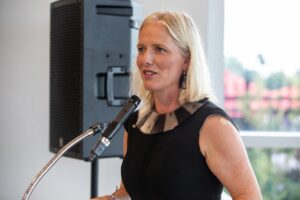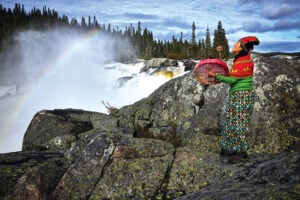She’s a passionate advocate for the health benefits of time spent in nature, and in 2020 B.C.-based family physician and environmental advocate Melissa Lem turned her beliefs into action when she founded PaRx. Launched through the B.C. Parks Foundation, PaRx encourages healthcare providers to prescribe time in nature to improve patient health. Just two years on, PaRx operates in eight provinces and boasts more than 6,000 registered prescribers. In January, the program signed an agreement with Parks Canada, allowing doctors to prescribe a Parks Canada Discovery Pass to patients through the PaRx program. Dr. Lem spoke with Canadian Geographic about the positive effects of getting outdoors, and how she believes PaRx is part of a greater movement toward climate action.
On nature and health
When I actually moved from where my first job was in northern B.C. as a rural family physician back to downtown Toronto, where I was born, and then really felt a major deficit myself. So I still remember the moment I was standing in my apartment, looking out at concrete and glass and a little square of sky where I can see the CN Tower and hearing the streetcars rumble by beneath and thinking, Why do I feel so stressed? You know, my work in northern BC was much more stressful; I was a new grad, running an emergency department, delivering babies in the middle of the night. But I loved the work. I think part of the reason why I loved the work was because I could go for a hike immediately after work in the mountains. My commute to and from work was past the hospital garden where I could take wild raspberries and look at the moisture rising over the mountains. Whereas when I moved back to Toronto, it was suddenly back in an urban environment where I didn’t have that stress relieving effect anyway.
On formalizing the health-nature link
Staring out at the concrete and glass, I realized my feeling of stress was related to missing nature. As a physician, I practise evidence-based medicine, and this intuitive sense I had about the health benefits of nature didn’t exist unless it was enshrined in research. And so I sat down at my computer and did a literature review. Study after study popped up showing how good nature is for humans across both mental and physical health. Though I hadn’t learned about this in medical school, I realized I needed to make it my mission to spread the word about the health benefits of nature to my patients and my community. Everything snowballed from there.
On the power of one
Ten or 12 years ago when I started this journey, this health-nature link really wasn’t talked about very much in Canada. And I thought, I’m one person. Just one family doctor. How am I supposed to make this happen? I knew I needed to team up with an organization that was parks- and nature-based that had the vision could make something happen on a national scale. That was the B.C. Parks Foundation.
On the importance of a prescription
In 2019, I connected with the B.C. Parks Foundation just as they were starting to develop their health and nature program. They were interested in launching a nature prescription program. There was no concerted movement in Canada to connect people to nature for health benefits until we launched PaRx. Any licensed healthcare professional can be a prescriber. We’ve learned that a written prescription is better than verbal advice in motivating people to make a lifestyle change. We prescribe patients two hours of nature time per week — 20-plus minutes at a time. Receiving that written prescription also gives patients permission to prioritize time outside.
On the joy of making a difference
Hearing from patients and colleagues about how much nature has done for them is very rewarding. So many patients and friends have said to me, “Oh, by the way, I took a walk in a park yesterday and I thought about you and your program” or friends tell me they make it a priority now to get outside every single day with their kids because of this program. So I think it has a ripple effect beyond individual patients I see in my office.
On the fourth pillar of health
Before founding PaRx, I used to tell my patients about how a healthy diet, adequate exercise and good sleep were key components of a healthy lifestyle. But given the massive body of evidence behind the health benefits of nature, I think it’s accurate to say that nature time — outdoor time — needs to be non-negotiable. It’s just as essential to our health as the other three factors. When we launched PaRx, we called nature time the fourth pillar of health, and I see it as non-negotiable as diet, exercise and sleep in keeping us healthy.






